Chapter: Clinical Dermatology: Eczema and dermatitis
Irritant contact dermatitis
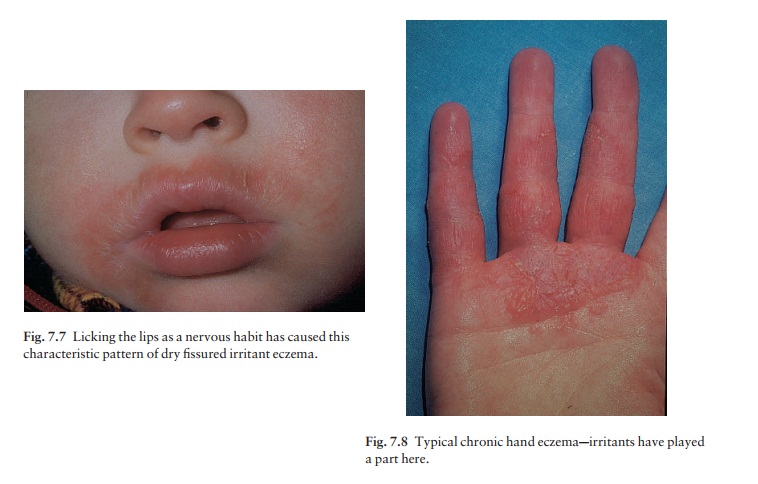
Irritant
contact dermatitis
This
accounts for more than 80% of all cases of con-tact dermatitis, and for the
vast majority of industrial cases. However, it can also occur in children, e.g.
as a reaction to a bubble bath, play dough or lip-licking (Fig. 7.7).
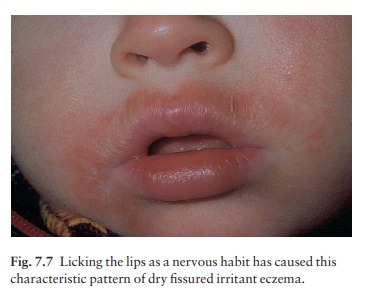
There is a wide range of susceptibility: those with very dry or fair skins are
especially vulnerable. Past or present atopic dermatitis doubles the risk of
irritant hand eczema developing.
Course
The
need to continue at work, or with housework, often stops the skin regaining its
normal barrier
Cause
Strong irritants elicit an acute reaction after brief contact and the diagnosis is then usually obvious. Prolonged exposure, sometimes over years, is needed for weak irritants to cause dermatitis, usually of the hands and forearms (Fig. 7.8). Detergents, alkalis, solvents, cutting oils and abrasive dusts are common function. Even under ideal circumstances this may take several months. All too often therefore irritant eczema, probably reversible in the early stages, becomes chronic.
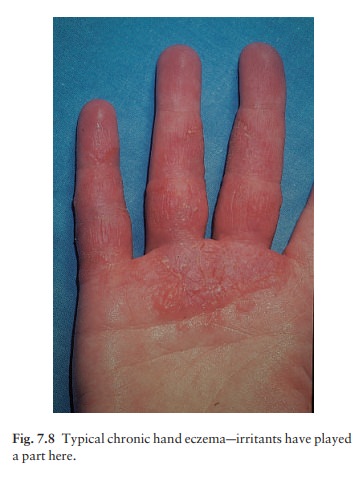
Complications
The
condition may lead to loss of work.
Differential diagnosis
It
is often hard to differentiate irritant from allergic contact dermatitis, and
from atopic eczema of the handsathe more so as atopic patients are especially
prone to develop irritant eczema.
Investigations
Patch testing with irritants is not helpful and may be misleading; but patch testing to a battery of common allergens is worthwhile if an allergic element is suspected. Even if the results are negative, patch testing is not a waste of time, and provides a valuable opportunity to educate patients about their condition.


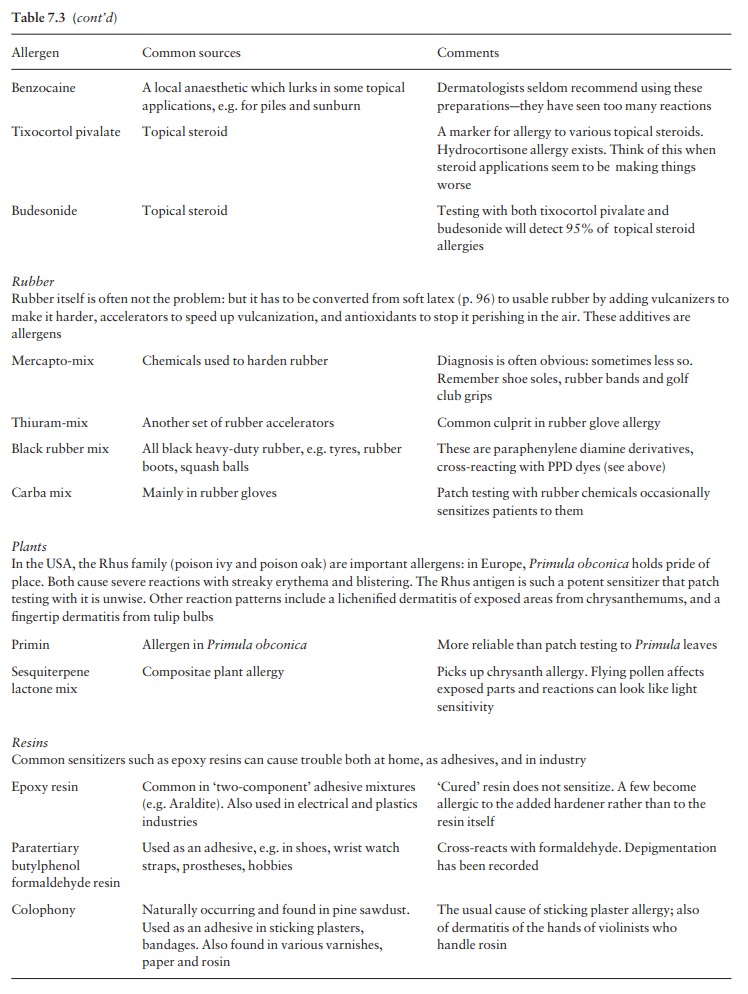
Treatment
Management
is based upon avoidance of the irritants responsible for the condition, but
often this is not possible and the best that can be achieved is reduced
exposure by the use of protective gloves and clothing. The factory doctor or
nurse can often advise here. Washing facilities at work should be good. Barrier
creams seldom help established cases, and dirty hands should not be cleaned
with harsh solvents.
Prevention is better than cure because, once started, irritant eczema can persist long after contact with offending substances has ceased, despite the vigorous use of emollients and topical corticosteroids. Vulner-able people should be advised to avoid jobs that carry an especially heavy exposure to skin irritants (see Table 7.4). If the right person can be placed in the right job, fewer trainee hairdressers and mechanics will find out the hard way that their skins are easily irritated. Moderately potent topical corticosteroids and emollients are valuable, but are secondary to the avoidance of irritants and protective measures.
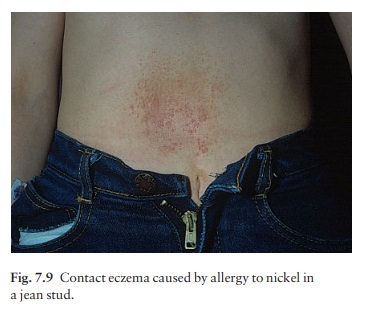
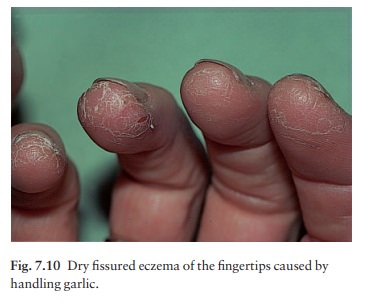

Related Topics